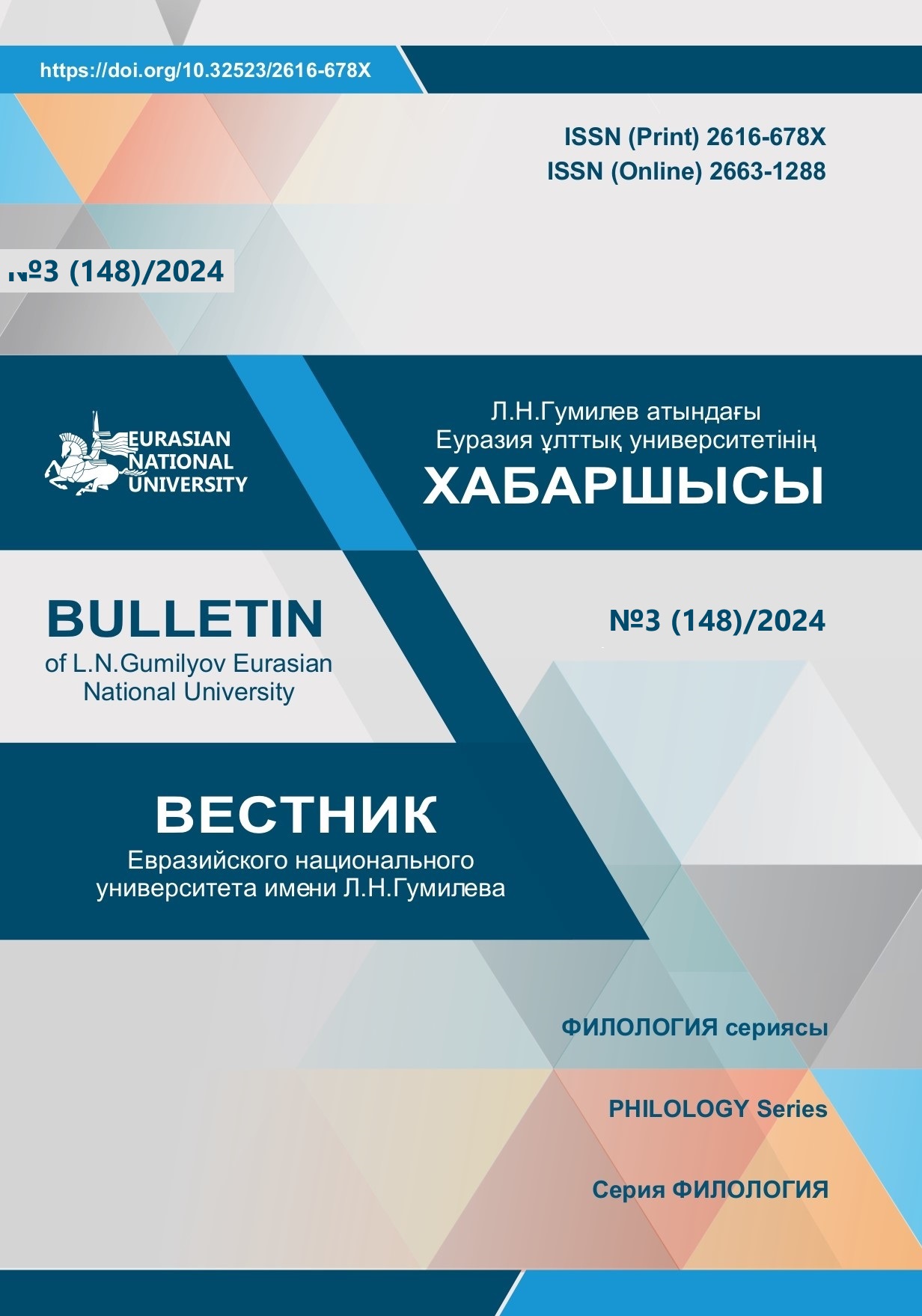Representation of sacred vocabulary in linguistic consciousness
Views: 224 / PDF downloads: 234
DOI:
https://doi.org/10.32523/2616-678X-2024-148-3-44-59Keywords:
linguistic consciousness, sacred lexicon, associative experiment, representation, ethnopsycholinguisticsAbstract
The lexical-semantic system of languages exhibits a set of common features and a
range of semantic spaces that are characteristic of native speakers. The sacral lexicon, considered inseparable from the history, life, cognition, and religion of the nation, forms a lexical group that constitutes the semantic space of the language of an ethnos.
In Kazakh linguistics, the semantics and etymology of the sacral lexicon, the connection of sacral words with everyday life and cognition, and the primary reasons for mastering sacredness are studied in conjunction with ethnography, history, and culture. However, the perception of the sacral lexicon by the linguistic consciousness of the modern generation and its representation are not considered.
Accordingly, the article is significant from both a scientific and practical standpoint in elucidating the vitality of a nation and its national language through the manifestations of linguistic consciousness.
The study aims to identify the modern associative representation of units with sacred meaning in the nation’s cognition. Analyzing linguistic consciousness associated with words “cradle,” “bow,” and “spindle” reveals the inseparable unity of language and nation. This evaluation assesses the preservation of the national code and unveils the uniqueness of a nation through the native language in the globalized era.
The article uses an associative experiment, the survey, to study sacred vocabulary in linguistic
consciousness. Results show a prevalence of national character, indicating that sacred units with people’s life, traditions, and customs persist in younger generations, crucial for preservation and transmission. The influence of other cultures becomes apparent in individual responses to stimulus words like “cradle,” “bow,” and “spindle,” as revealed through the analysis of participants’ reactions
in the experiment.







